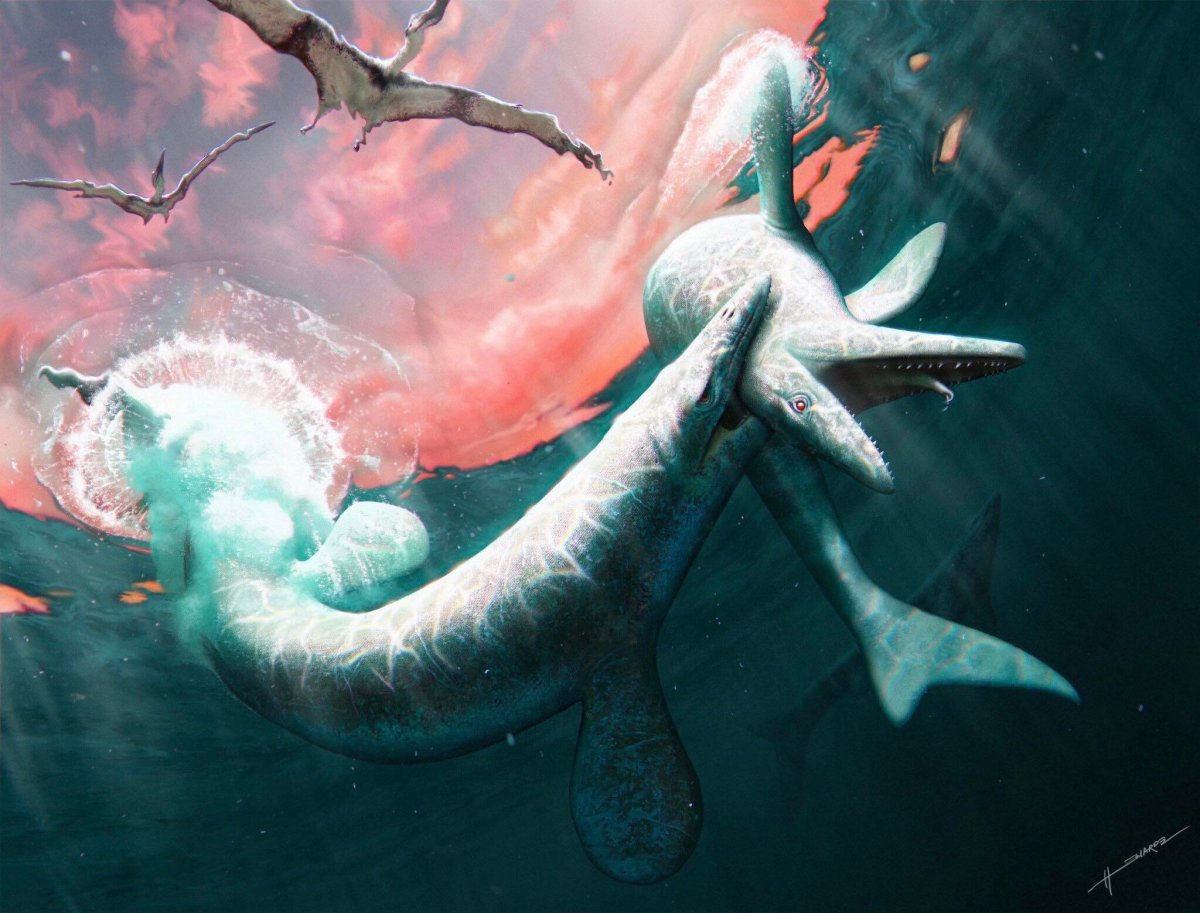A gigantic sea monster from the era of the dinosaurs has been discovered and named after a Norse snake.
The 24-foot-long creature is a new species of mosasaur—aquatic, carnivorous lizards that lived during the late Cretaceous period. The fossil was discovered in North Dakota in 2015, and is described in a new study published in the Bulletin of the American Museum of Natural History.
Paleontologists discovered the "impressive specimen" consisting of a near completely intact skull jaws, cervical spine as well as some vertebrae.

"If you put flippers on a Komodo dragon and made it really big, that's basically what it would have looked like," study lead author Amelia Zietlow, a Ph.D. student in comparative biology at the American Museum of Natural History's Richard Gilder Graduate School, said in a release detailing the findings.
Scientists named the new species Jormungandr after a sea monster from Norse mythology. In stories, the huge mythical creature is also known as the Midgard Serpent or World Serpent, and is said to live in a sea encircling Earth.
Mosasaur were first discovered over 200 years ago. Its discovery predates what we know about the dinosaurs. But scientists still have many questions on the species, including how and when they evolved to become fully aquatic.
Paleontologists are also trying to determine how different groups of mosasaur are related to each other. This new discovery provides them with new insight into the species.
"This fossil is coming from a geologic time in the United States that we don't really understand," co-author Clint Boyd, from the North Dakota Geological Survey, said in the release. "The more we can fill in the geographic and temporal timeline, the better we can understand these creatures."
The new fossil appeared to have a shark-like tail and a bony ridge on the skull.
After closer analysis of the specimen, scientists determined that it shares features with two other kinds of mosasaurs—the Clidastes, a smaller kind of mosasaur, and the Mosasaurus, which grew to nearly 50-foot long and lived during the time of the infamous Tyrannosaurus rex.
Paleontologists believe that the Jormungandr would have lived before the time of the Mosasaurus, around 80 million years ago.
"As these animals evolved into these giant sea monsters, they were constantly making changes," Zietlow said in the release. "This work gets us one step closer to understanding how all these different forms are related to one another."
Do you have a tip on a science story that Newsweek should be covering? Do you have a question about Jormungandr? Let us know via science@newsweek.com.
Uncommon Knowledge
Newsweek is committed to challenging conventional wisdom and finding connections in the search for common ground.
Newsweek is committed to challenging conventional wisdom and finding connections in the search for common ground.
About the writer
Robyn White is a Newsweek Nature Reporter based in London, UK. Her focus is reporting on wildlife, science and the ... Read more
To read how Newsweek uses AI as a newsroom tool, Click here.





